
..........................................................................................................................................................................................................
if everybody drives, nobody moves

my late father spent a large proportion of his career working from an office in glasgow city centre. since we lived about thirty miles away on the coast, he made the same commute by car, five days a week, for almost three decades, during which time, as you can imagine, he became very familar with his route into the city. never a man with a great deal of patience, he'd rarely find comfort sitting in traffic for any length of time, more inclined to navigate all manner of shortcuts, to avoid sitting in a queue at traffic lights or road junctions.
many of the smaller back roads that formed the basis of those shortcuts, were probably what would nowadays be referred to 'rat runs', and have likely been augmented with either traffic calming measures, twenty's plenty signage, or a combination of both. the irony of my father's circuitous routes into glasgow city, was often that his time saving amounted to nil. the object of the exercise seemed to consist of simply continuing to move, as opposed to sitting in traffic. as i said, he wasn't renowned for his patience in such matters.
i'm none too sure that my patience is any greater, though i'd like to think that it is. however, there's no doubting that, with an ever-increasing number of vehicles on the roads, all heading in the same direction, the patience threshold of most motorists is being stretched further and further each year. granted, at present, there are probably reduced numbers heading into city offices, so the nation's motorists are possibly experiencing a period of respite, but i'd be willing to bet matters won't stay that way for ever. there's still a great deal of truth in the slogan 'you're not stuck in traffic; you are traffic'.
a variation on that theme is exemplified by today's heading, a phrase coined by journalist, carlton reid, author of the superb 'roads were not built for cars', reviewed in these very pixels several years ago. it points a significant finger at the world's motorists that, despite having been shown images of traffic tailbacks for many a long year, there seems little change in motoring behaviour. all that seems to change is the length of those tailbacks and the pollution they cause to city atmospheres.
i am not naive enough to think that the problem as described above, could be eliminated overnight, were everyone to substitute a bicycle for their motor car. granted, straighforward observation will point to the majority of those vehicles containing but one person, but i think it highly unlikely that the modern contemporaries of my father would have been content to cycle a round trip of sixty miles, five days a week, to get to and from work. however, for such lengthy commutes, there is usually the alternative of either train or bus, or both.
current covid restrictions have prevented me travelling to the mainland to visit my elderly mother, who still lives in the same town in which i was brought up. but when the opportunity once again presents itself, i will take the ferry to scotland, a bus to glasgow and a second bus to the coast. the bus service to glasgow is timed to meet the ferry's arrival at kennacraig, while the onward coach service to my mother's abode, leaves buchanan bus station every fifteen minutes during the day. were i to live on the coast and work in the city, i'd be inclined to use just such a bus service, with the option of a highly frequent rail-service close-by as an alternative.
i tend to think that for the majority, just such a public transport service is likely also to be available. thus, it's probably not the infrastructure that's failing us, it's the mentality of the individual.
however, the rural idyll is rarely any better. islay's bus service is, by mainland standards, very poor. the coaches infrequently ply a central route, one which excludes the majority of the island's single track roads and remoter dwellings. some of this is of necessity (the buses can't negotiate some of the routes) and some of economic pragmatism. yet, but one week past, i met a lady of my acquaint in a nearby homestore, who had driven a large 4x4 around 100 metres in order to make purchases that could have been easily carried home in a matter of minutes. in fact, i had walked further than she had in the process of making my own purchases.
it would take only a brief overview of the number of cars and vans parked on bowmore's village streets, to know that, if they all attempted to drive simultaneously, nobody would be capable of going anywhere. of course, the problem here is that i, and probably carlton reid too, am preaching to the converted. i would be most surprised to learn that anyone without a bicycle, or an interest in same, would be inclined to read these words. which probably means that, pretty soon, nobody will be going anywhere fast.
or anywhere at all.
monday 15 february 2021
 ..........................................................................................................................................................................................................
..........................................................................................................................................................................................................what price neutrality?
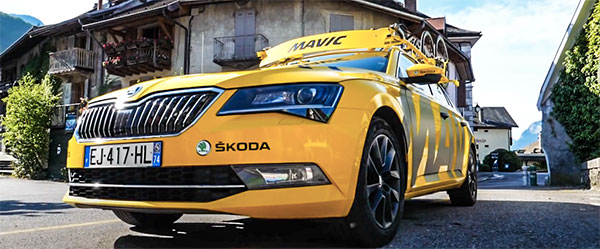
i'm not sure how it occurred, but somewhere along the line, i appear to have subscribed to the newsletter sent out with remarkable frequency, by steel-vintage bikes. and unlike many of the newsletters/spam that heads in my direction, i am grateful for my ineptitude, for i can think of little better in the way of weekly punctuation, than to peruse the retro machinery on display on their website.
i currently ride my steel ritchey logic, equipped with carbon road pedals from the same manufacturer, but not so very long ago, the fine folks at chater-lea were kind enough to send a pair of their impressively heavy, but mechanically superlative grand tour pedals. of course, like almost everyone else in the cycling world, i am bereft of road shoes that have no need of cleats, making these pedals a tad impractical for any heavy lifting. but then steel-vintage bikes do not simply sell steel vintage bikes, but many appropriately styled accessories, one item of which is a pair of steel toeclips, ideal for affixing to the chater-lea pedals.
i cannot deny that i am sorely tempted.
but then arrives the quandary of how suitable such pedals are, in a feng shui sort of manner, for attaching to a campagnolo record carbon chainset? the world incongruous has been mentioned on more than just one occasion. perhaps i should set my horizons a little wider and consider one of the marvellous vintage steel bikes on offer via the website? and while we're on that very subject, there is a notable consistency when appraising the groupsets upon which these desirable velocipedes achieve forward motion. as an example, this week's delights included a virginia competition, an eddy merckx corsa extra, a tommasini velocista, and a suzzi. each and every one of those is sold with a campagnolo record groupset, some modern enough to feature ergorpower shifters on the brake levers, while others still sport a pair of downtube levers.
it was 1973 when shimano first introduced the dura-ace groupset; prior to that, almost every top level professional's bicycle would have been equipped with campagnolo record. it's conceivable that, with little or no competition in the professional groupset market, vicenza had become a bit complacent, allowing their japanese nemesis a means to challenge the monopoly. lord voldemort's tour de france victory in 1999 marked the first time the japanese component manufacturer had (metaphorically) stood on the top step of the parisian podium. twenty-two years later, thirteen teams are astride shimano dura-ace equipped bicycles, with campagnolo reduced to less than a third of that number at four, while sram (perhaps suprisingly) languishes with two.
of course, though we suspend our sense of disbelief when any one of those component providers claims the tour/giro/vuelta or one of the monuments was won at the behest of their particular product, i think we're all well enough aware of the mores of professional cycling to realise that whomsoever wins any race, could have done so aboard any one of the bicycles in the peloton, equipped with any groupset you care to mention. when movistar ended their lengthy association with campagnolo last year by moving to sram, several of the 'now begins a new chapter' style press releases were less than convincing about the difference this change might actually realise.
but, apart from the inevitable changes in bicycle suppliers (witness jumbo visma's switch to cervelo, for instance) comes the news that an even longer association will come to a sad end when those three weeks in july (covid restrictions permitting) hove into view later this year. french wheel manufacturer, mavic, first provided its distinctive yellow neutral service vehicles at the tour de france in 1977, four years after they'd first appeared at the 1973 paris-nice race. those yellow vehicles have remained a part of the entourage following the peloton ever since.
unfortunately, though once owned by finland's amer sports, the latter was subsequently acquired by china's anta sports, before amer 'discontinued' their cycling division and mavicwas sold to american-based private equity firm, regent. or was it? for initial reports stated that mavic had actually been sold to delaware-based m-sports. a mavic press release then stated the company appeared to have been abandoned, taken over by neither american company, and by last year, mavic was in receivership.
so the fact that mavic has now had to stand down its neutral support of the french national tour, after 44 years of sterling service, is perhaps quite understandable, if more than a smidgeon disappointing. and as if to underline the rise and rise of the rising sun, their place will be taken by the blue colour of shimano neutral service, perhaps smudging the definition of the word 'neutral'. do not misunderstand me, i am not for a moment suggesting that those blue cars will offer better or quicker service to shimano-equipped teams than to the six teams riding competitors' products; shimano has been offering sterling race neutral service for many years.
but with no disrespect to shimano, the tour just won't be the same without mavic yellow.
sunday 14 february 2021
 ..........................................................................................................................................................................................................
..........................................................................................................................................................................................................how much is that doggie in the window?
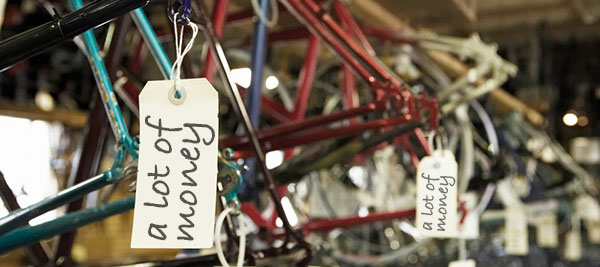
a matter of weeks ago, a national cycling magazine published a feature on the apparently dramatic rise in the cost of high-end road bikes, and the reasons behind such economic inflation. the general consensus was that, apart from rising material costs, something that afflicts pretty much all manufacturing of all kinds, technological development in the realm of carbon fibre was likely most to blame at the top end, where the most substantial rises had been witnessed. so, while there are now a number of bicycles available at prices in excess of £10,000, prices even the best of us would quite rightly blanche at paying, there are still particularly fine examples of current road-bike technology available in the £1,500 - £2,500 price bracket (and i'm talking about complete bikes).
in the mid-1980s, i purchased a £300 mountain bike, a price that was generally regarded as entry level at the time, some thirty-six years ago. i'm really not arithmetically competent to calculate the expected increase those three dozen years would naturally have impinged upon that original £300, but all being equal, i wouldn't see £600 - £700 being regarded by the majority as an unreasonable entry-level price for a road bike in 2021. however, i can think of a number of folks of my acquaint, who would still remain aghast that anyone would consider spending that amount of money on a bicycle.
i'm inclined to think that the increased popularity of the e-bike might well have had a hand in changing people's perceptions of the cost of a bicycle. only the other day, a friend mentioned that he'd opted to spend £1,500 on an e-bike, rather than buy himself a similarly priced watch. this is where the tables are turned, for i cannot fathom why anyone in their right mind would think it amenable to spend that amount of cash on timepiece. yet wired magazine publishes an annual watch supplement, featuring wristwatches costing several hundred thousands of pounds, well in excess of any bicycle price tag, for a device that simply relates the same time as the average smartphone.
perception, however, is still everything; higher prices for e-bikes are better tolerated, because there's a motor and a battery attached, a selling price that might come home to roost on discovering the cost of a replacement battery when the original item reaches the end of its useful life. but how much do folks really spend on their bicycles? without sending e-mails to a representative selection of the nation's bike shops (a lengthy and fraught process at the best of times), i would probably have to resort to educated guesswork, were it not for the recent release of insurance claim figures by cycle insurer, bikmo. far from these reflecting the much-vaunted steal-to-order myth, the largest payouts were towards bicycles in the £1001 - £2,500 bracket, with the next largest sector being towards machinery costing less than £500.
you and i will surely be wondering why anyone would bother stealing such (relatively) low-cost bicycles? but the number may more accurately reflect the type of bicycle owned by the majority.
insurance claims on bicycles costing in excess of £5,000 were below 2% of all payouts, but that could also highlight the fact that owners of expensive bikes are inclined to take greater care of their purchases. the average payout was but a few pounds shy of £1300, which we could probably accept as being close to the average purchase price in the uk for a bicycle. given my back-of-the-envelope calculation for an entry level as being somewhere between £700 - £800, that could conceivably indicate that the great unwashed are happy to pay a reasonable premium to own a better than standard bicycle.
when the cost of bicycles enters the discussion, i am constantly reminded of a friend of mine, a man who is not short of a few pounds. when i owned my first steel colnago, having espied it sitting in the bikeshed, he enquired what such a machine would cost. replying that, the manner in which it had been assembled, would incur a cost remarkably close to £1500, his response was unprintable in a family blog. this despite him having just parked a car worth well in excess of £40,000. things are different nowadays however, as the bike bug eventually bit, and he currently rides several thousand pounds worth of carbon fibre.
the majority of you on the other side of my computer screen will be well-acquainted with all the costs associated with the velocipedinal life, whether or not we have the financial wherewithal to access those in the upper regions. however, i figure that, while most of us understand why certain bikes, components, clothing and accessories cost what they do, many are still on the receiving end of the 'you could have bought a car for that' riposte.
but maybe, just maybe, the tide is beginning to turn.
saturday 13 february 2021
 ..........................................................................................................................................................................................................
..........................................................................................................................................................................................................storm before the calm
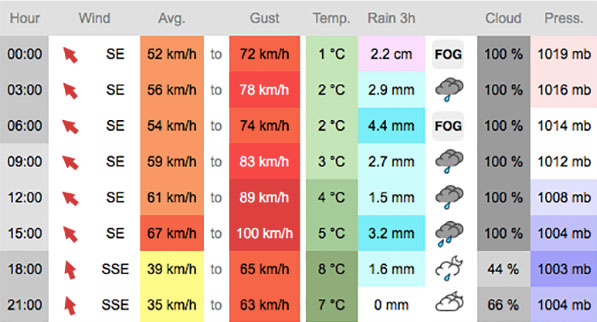
it will likely surprise you not at all to learn that the hebridean weather at this time of year can be a tad fractious at best. meterologically, officially, we will not see the back of winter until 20 march, which, if nothing else, offers some justification for the inclement spell we're just about to experience. the past few days have been tentatively glorious, if a bit on the chilly side; my morning walks have been close to idyllic on the way out, if a fraction cooler on the return trip. we are talking minus figures here. my daughter in glasgow has regaled us with videos and images of our grandsons playing in thick snow, while the principality has remained bone dry, with icy bits around the edges.
but, aside from keeping at least one eye on the weather forecast, that a change was in the air was determindedy demonstrated on that return leg this morning, when the previously absent wind began to blow, making every effort to combine with the low temperature, and cut me in half. calmac had already alerted prospective passengers by wednesday afternoon, that thursday sailings were liable to disruption or cancellation, a warning that came true on both counts. the morning ferry left one hour later than timetabled and the last two sailings of the day were, indeed, cancelled.
so how does this affect velocipedinal hebridean life?
lest you think that we all live at the mercy of the daily weather forecast (and i cannot deny that many do), every second friday, since last june, it has been my pleasure to ride from bowmore to bruichladdich, intent on delivering copies of the local newspaper, for saturday morning purchase. it has thus become customary to check the forecast on a monday and each following day of the week, to decide which bike i will require and which particular set of waterproofs should be made available. obviously, the thought of a soya latte and a slice of ever-so-light lemon drizzle cake is a huge incentive.
but the forecast would tend to suggest that cycling, after ferry cancellations, will tend to be one of the first activities to bite the winter bullet. at the time of writing, though blue sky and sun would seem to be the order of the day, the wind speed is expected to be nigh on 70kph. hardy fellows we might pretend to be, but that's beginning to touch on the upper limits of achievability, and i do place great faith in remaining upright. but that is simply the aperitif, for saturday currently offers the prospect of an increase in wind velocity to nearer 80kph, in temperatures of zero degrees (wind chill will lower that considerably), before sunday wallops in with gusts of 100kph. though i have no wish to tempt fate when it decides to slap me in the face, i feel confident enough to state that cycling is probably not on the menu for this weekend.
so, at present, the storm in the croft is not the wind per se, but the fact that i might experience my first weekend indoors for many a long year. this promises, therefore, a weekend of pacing the living room carpet, checking the visible effects of the weather from both front and rear windows, in the hope that a sliver of optimism might hove into view. mrs washingmachinepost will probably remain under the covers all day, if only to avoid my being impossible to live with for 48 hours. of course, the island is so exposed from years of being strafed by atlantic squalls, that there is little in the way of shelter to be found anywhere along any possible cycle route. and even in the moments when i figure my tenacity might allow for a few pedal strokes, i remind myself that it would take only a single gust to blow me into the path of passing traffic.
it's bad enough that i pose a danger to myself, without endangering others.
those of us in the velo club, by and large, have lived with weather systems,s such as that forecast this weekend, for many a long year. what those of you on the mainland might consider to be a headwind, more often than not, would scarcely register over here, but by now, we well know what's rideable and what isn't. i fear the next few days will demonstrate the latter.
still, i'll get plentyof exercise pacing the living room floor.
friday 12 february 2021
 ..........................................................................................................................................................................................................
..........................................................................................................................................................................................................what did we used to do?
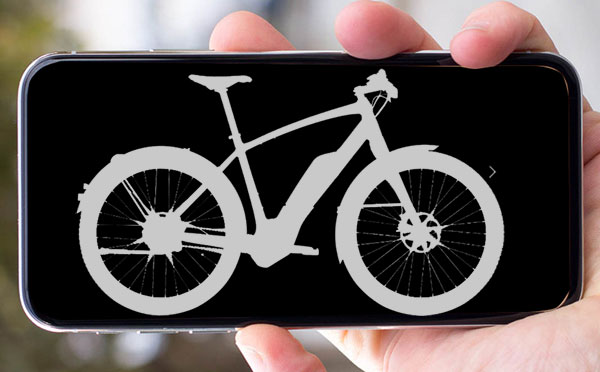
a friend of my late father was one of those early adopters we read about, i bit of a gadget freak. so when the forerunner of the mobile phone, the carphone, arrived on the scene, he was amongst the first to have such a device installed in his mercedes. an architect to trade, his ansaphone message on the carphone informed callers that 'i'm sorry i'm in right now, but leave a message and i'll call you back when i'm out.' technological humour at its best.
my father, however, just like his eldest son (yours truly), was less than enamoured by the advent of the mobile phone. though in his working days, mobile phones were the size of shoeboxes, with attached batteries to match, he refused to have one on different grounds. the basis for his non-adoption revolved around travel time, which he regarded as a sacrosanct, protected domain, during which he might or might not have carried out work-related tasks (if travelling by train), but certainly did not wish to be interrupted by calls from clients or the office.
only on retiral, did he carry a, by now, smaller mobile phone in the car in case it suffered a breakdown or puncture, or to call my mother if he was likely to be late home. not being a business executive in any way, shape or form, i have opted to remain a mobile phone free zone, on the basis that i sit next to a phone at the office and similarly at home. and if i'm out on the bike, i don't want anyone to call me anyway. of course, living in a small island community such as this offers the benefit that should any malfeasance occur during a bike ride, there is always likely to be someone nearby, willing and able to help.
mrs washingmachinepost has an iphone, even though she rarely sets foot outdoors these days, and as a childminder, has little need of so doing. both my grown-up chiildren have mobile phones, as does one of the older kids under the charge of mrs twmp. it is blatantly obvious, even to me, that i am the one out of step, and i'm quite happy with that, for i can't help feeling that there are a great deal of procedures and apps exclusive to the world of the smartphone that exist because they can exist, rather than because there is no alternative.
several years ago, while attending bespoked in bristol, i met up with some friends who had needed to park their car farther from the venue than they'd have liked, because nearby parking could only be paid for by means of a mobile phone app. and they didn't possess one.
but then yesterday, on my way home from work, i was stopped by a friend who told me, having recently reached a significant age and being, as he described himself, 'a big lad', had decided he needed to do something about that state of affairs. extricating an ageing mountain bike from the shed, he had gone for a short bike ride on a nearby cycle path, but had to dismount on reaching a steepish hill, since he did not feel capable of cycling to the top. subsequently, he had been kindly loaned an e-bike for an afternoon, and, having enjoyed the experience, he was now intent on acquiring one for himself.
i feel i can but applaud his effort to stem an increasing waist size, and the realisation that he had need of so doing. and ultimately, an e-bike might be the very vehicle to get him started, as is the case for many who have decided to adopt the way of the saddle during recent months. that would undoubtedly account for the dramatic increase in e-bike sales, and the opening of e-bike only bike shops.
but what did we used to do? how did we all survive without mobile phones? i admit, i thought modern society would have forced me into ownership by now; i am resolute that i will not be obtuse about the subject. when a service, or services, that i need to access cannot be accessed by any other means, then that will likely be the time to bite the bullet (so to speak). but how did civilisation ever make it as far as this, when the iphone and its attendant apps only arrived fourteen years ago? and how did any of us become involved in the velocipedinal world, without the aid of the e-bike?
you see, it's not the adoption of the battery that specifically concerns me, but its potential persistence. the fellow of which i appraised you above will soon purchase and subsequently ride his new electric bicycle, allowing an easing his efforts when the gradient increases. and, assuming all goes well, he will continue to ride it well into the future. but therein lies the nub of the problem. at one point in the recent past it was tentatively suggested that the e-bike would serve as an equitable introduction to cycling, hopefully serving as a ramp to ownership of non-electric bicycles.
i would contend, however, that, having purchased their expensive machinery, it will persist in perpetuity, meaning the battery will likely be for (its relatively short) life. obviously that may mean new recruits to the way of the velocipede, but given that e-bikes tend towards the heavier end of the scale, riding with the motor switched off seems an unlikely scenario. if the e-bike becomes as prevalent amongst the younger generation of would-be cyclists, as the smartphone appears to have become, how long before unfettered pedal power becomes a thing of the past?
rather obviously, civilisation is doomed.
thursday 11 february 2021
 ..........................................................................................................................................................................................................
..........................................................................................................................................................................................................take five
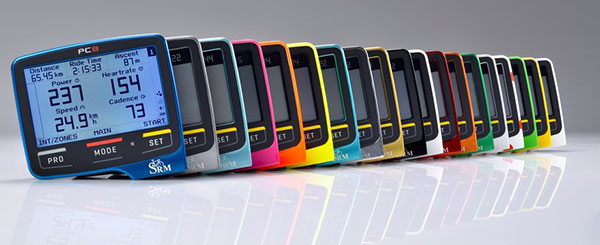
though i have read as widely as i can, and try as i might, i do not understand bitcoin. elon musk may well have invested $1.2 billion of shareholders' money in the currency, but that's between him and them; i must assume that he and they fully comprehend bitcoinage and how it's likely to increase the bank balance of the world's richest man. apparently, walking into your nearest high street bank (assuming they've not been closed down) and asking to exchange a ten pound note for some bitcoin, is unlikely to result in a satisfactory resolution.
at least one of the answers to the latter exchange conundrum is the current value of one bitcoin, currency that you can't touch, can't see and can't put in the zipped pocket on the back of your cycle jersey. at the time of writing, one bitcoin will cost you £33,607.18, which is pretty good going for a completely intangible type of money. but i am mightily confused by the knowledge that bitcoins are mined, pretty much the main bit i cannot comprehend. and to make matters worse, mining bitcoin uses a rather frightening amount of electrical power (yet another bit i have failed to comprehend). according to news seen yesterday, bitcoin has overtaken the annual energy usage of argentina and is closing in on that of norway.
considering that elon musk's tesla electric car company was designed to alleviate the need for fossil fuels, thus reducing world pollution, investing in a currency that seems to thrive on substantial energy use seems a tad iniquitous. according to reports, it takes ten minutes to mine a bitcoin and uses 72 terawatts of energy. nope, me neither.
however, energy, as a concept, covers a multitude of definitions. in relation to the humble motor car, energy is expended by the burning of petrol or diesel; the not so humble power station provides electrical energy by consuming that provided by nuclear fission, coal or, once again, oil. and the electrical energy produced by the latter will utlimately be used to provide power for elon musk's tesla cars, along with all the others. some have already called this a vicious circle, and i fear they might be right.
but energy, for you and me, invariably revolves around our personal output in watts, a number that can (for some) be increased through methodical training, fueled by a large plate of porridge with a topping of peach slices and a soupcon of soya milk. having said that, since an srm power meter would struggle to make it into double-digits if affixed to the ritchey, perhaps i'm scarcely the chap to offer nutritional advice. but though much emphasis appears to rest upon this acquisition of personal pedalling power, buoyed by regular articles in the cycling press, there is another side to the equation. and the other side rest upon much smaller numbers and ostensibly modest energy consumption.
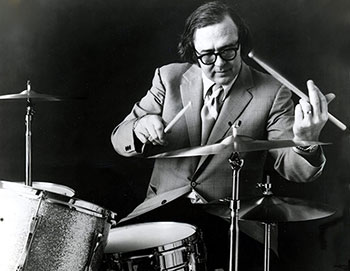
i confess i have no knowledge as to its geographical reach, but i was recently introduced to the take five challenge, not, as you might think, how many times you can listen to joe morello's solo on the iconic, dave brubeck track, from the album time out, but a daily challenge involving the number five. thus, for you and i, it might involve a five minute bike ride (a little hebridean humour there), a five kilometre bike ride, or perhaps even a five hour bike ride. the latter, however, might stretch credibility a tad too far.
for others of a non-velocipedinal leaning, it could be a five minute walk, five deep breaths in the great outdoors, or five minutes sat in silence. the rationale behind the foregoing, is to concentrate on mental wellbeing in whichever manner suits you best.
though i am pretty much at peace with myself in this respect, i recognise that the same state of affairs might not apply to everyone. for those of a less intrepid physical disposition, walking or sitting in silence may prove most efficacious, but the bicycle is, in itself, a saviour when it comes to 'getting away from it all'. currently the day to day involves a smidgeon more stress than i'm used to or particularly want. i'm not one of those individuals who thrives in such situations. however, come friday afternoon, and saturday and sunday mornings, i can go for extended bike rides, pretty much anywhere i want on the island, an activity that, not to place too much emphasis, keeps me sane. or at least my definition of sane.
as the saying goes, your mileage may vary, but just bear in mind and recognise that the bicycle can be your own saviour in these somewhat straitened times, however you manage to access saddle and pedals. just take five minutes to consider that thought.
wednesday 10 february 2021
 ..........................................................................................................................................................................................................
..........................................................................................................................................................................................................joined up thinking

while having at least partially waxed lyrical over the unique illustrations of daniel rebour in yesterday's column, i had dutifully checked the present day var tools website, on the off-chance that they had continued their illustrative trend by transforming from pen and ink to pixels. the resulting knowledge was, to a certain extent, a double-edged sword. for though it was disappointing to note that the current illustrations are not only photographic, but monochromatic to boot, the fact that they were portrayed thus meant no need to reconsider the wording of my article.
however, it's not only the printed catalogue that has suffered; the entire bicycle has become subject to the digital whims of the computer age, designed as it is using computer aided design, computer aided manufacture and computational fluid dynamics. so where the aesthetics of the sturdy bicycle were once hand-drawn at the behest of an ernesto colnago or eduouardo bianchi, nowadays, using observational skills married to an inherent knowledge of the mechanics involved, the bicycles on the shop floor of your local bike shop, or those featured on any number of websites have been essentially reduced to a series of ones and zeros, combinations of which will determine the speed, aero features or stiffness quotient of whichever model on which you settle. they may even be responsble for the colour choices, depending on which zeros and ones are in fashion at any given time.
more recent developments have seen bicycle components produced by three-d printing. these beginnings were small in nature, featuring items such as handlebar brackets on which to hang your gps unit. but, by means of technology that simply never sleeps, it has become now possible to produce an entire bicycle frame from the depths of the same, but presumably larger, three-d printer. so while variations in carbon layup have allowed strength and rigidity to be placed precisely where required, three-d printing has refined that ability to the utmost (for now) degree. but, of course, it never stops there.
as previously mentioned, one of the sunday peloton was once in possession of shimano ultegra di2, rudimentary programming of which was possible via a smartphone app. i cannot deny that i found the theory of so doing to be one of those that existed because it was possible to exist. what many of us would have formerly referred to as a 'gimmick'. and there's little doubt that gimmickry of such nature is endemic in many walks of life and not necessarily confined to the velocipedinal realm. for instance, i have a set of bicycle lights which can be switched on and off by means of an app while standing at the kitchen window, one that also allows the checking of the prevailing battery level and changing the flash mode without requiring to be stood next to the bicycle.
why, i do not know.
however, a simultaneous feature of this app depends on the connectedness of other owners/users of these lights. though i know not quite how it works, i am advised that should sufficient numbers of thusly lit commuting cyclists divert their routes on any given morning, the information gathered could be passed onto fellow riders, offering them the opportunity to alter their route to avoid a potential hold-up. and that, in principle, comprises the growth routes of an integrated network of moving cyclists, particularly those riding e-bikes.
the installation of more-encompassing and integrated apps would allow the manufacturer to directly interact with the owners. with technologies such as 5g, connected sensors aboard the bicycle will have the ability to provide real-time feedback on safety issues, traffic flow and even air pollution. and perhaps of more immediate use to the rider, all this can offer assistance via turn-by-turn navigation. gps tracking has already been implemented to not only attempt to foil bike theft, but send an alert to your smartphone to inform that your bicycle has been moved from where you left it.
and perhaps more practically, integrated electronics and software would allow the disabling of battery power and, indeed, pedalling power to make life more difficult for would-be thieves. this could potentially mean cyclists using a remote unlocking when returning to their parked bicycle, similar to that effected by car key fobs for several decades. and, if you pay attention to the means by which software updates are achieved nowadays, any e-bike manufacturer worth their salt, would offer on-the-fly updates to integrated apps as they become available.
there's no doubt that all the above could be just as easily appended to the more humble, non-electric bicycle, though it's unlikely such would fit the description of the word integrated. that, at least, means that those of us who go cycling to get away from all the foregoing, would still have the option so to do. the question remains, however, for how much longer?
tuesday 09 february 2021
 ..........................................................................................................................................................................................................
..........................................................................................................................................................................................................